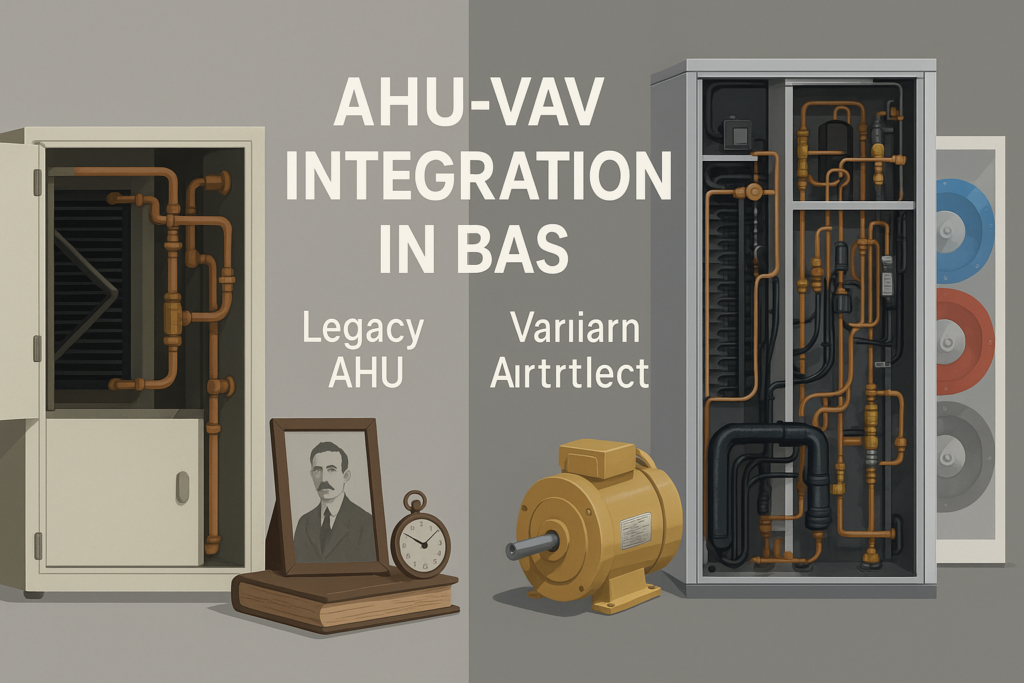
We discuss how to integrate Air Handling Units (AHUs) and Variable Air Volume (VAV) boxes into a Building Automation System (BAS) to enhance HVAC performance.
Key Points:
- Integration Importance: Effective integration of AHUs and VAVs through a BAS is crucial for energy efficiency, operational reliability, and occupant comfort in modern buildings.
- Core Components: The document defines and explains the roles of the Building Automation System (BAS), Air Handling Units (AHUs), and Variable Air Volume (VAV) boxes.
- Communication Protocols: It emphasizes the importance of communication protocols like BACnet, Modbus, and LonWorks in facilitating data exchange between components.
- Real-Time Data Exchange: The report details the real-time data points exchanged between AHUs and VAV controllers, which are essential for coordinated control.
- Integrated Control Strategies: It explores key optimization strategies such as Static Pressure Reset (SPR), Supply Air Temperature (SAT) Reset, and Demand Controlled Ventilation (DCV).
- Benefits: The integration leads to enhanced energy efficiency (reduced fan, cooling, and heating energy) and improved occupant comfort (precise temperature control, better air quality).
- Challenges: The document also discusses challenges like interoperability issues, network performance limitations, and configuration/commissioning errors.
- Conclusion: Effective integration requires careful system design, skilled personnel, and thorough commissioning to realize the full benefits of optimized HVAC performance.
Let’s review the documents in the folder together. They offer a technical analysis of how a Building Automation System (BAS) integrates Air Handling Units (AHUs) and Variable Air Volume (VAV) boxes. The documents highlight the benefits of this integration, as well as the potential challenges involved in achieving successful implementation, all with the goal of creating an efficient and comfortable building environment.


